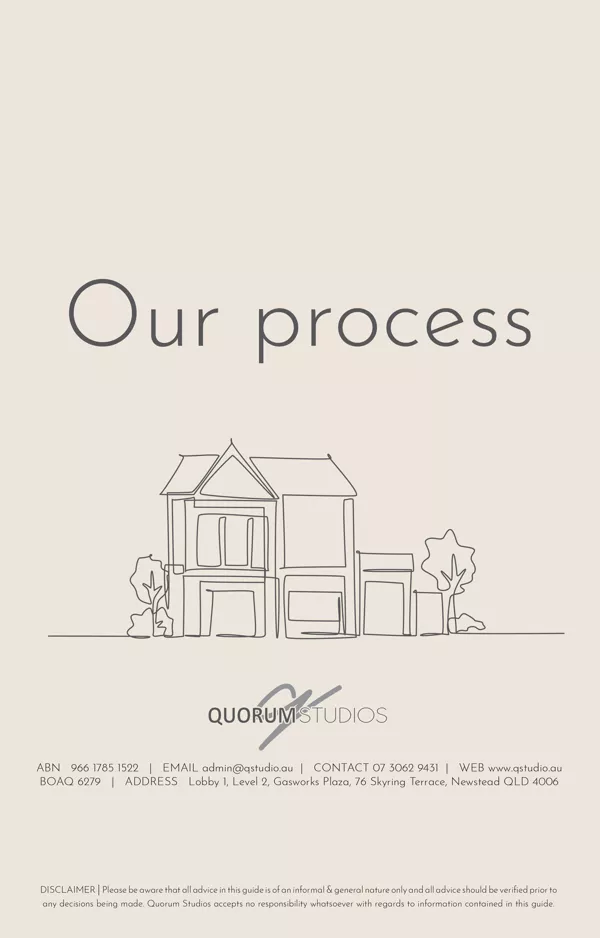A town planners take on how to date a pre-1947 house
By Peta Charles, Principal Town Planner at Brisbane Town Planning
From the outset, I need to be clear that I am not a heritage expert. This naturally begs the question “what does a town planner know about dating houses”? Well, for this wee planner, it turns out quite a bit.
Let me explain …
Within Brisbane, 1911 and 1946 are key cut-off dates for protection. More to the point, if you have a site that is in the Traditional Building Character overlay, the rules that apply (and hence what you can and can’t do in terms of partial demolition) vary, depending on which side of those numbers the house lands on. Over the years we have niched ourselves in the residential space in Brisbane, which means we do a lot of work on character houses. Which in turn means we spend a lot of our time trying to determine which side of those dates a house sits on and hence, what clients can do on a site.
Given it has such a big impact on the advice we give clients, we have found ourselves diving progressively deeper and deeper into this topic. As giving clients wishy-washy feedback and options is never fun. So no, we aren’t (and don’t pretend to be) heritage experts. However, the nature of our role and the work we do has meant we have learnt a lot about dating houses in recent years.
In this article, we want to share the process that we have developed when we are trying to date a house.
Step 1 – Setting the scene
Before we start, there are 5 key things that you need to understand.
1 – First and foremost, it is important to understand that Council does not have a database of construction dates for people to access. When you are doing a renovation etc, the onus is on you as the applicant to gather the required information.
2 - The “aim of the game” is never to try and find a single one-stop-shop resource that will give you the answer. 99% of the time, such a resource doesn’t exist. The aim instead, is to piece together the puzzle pieces and come up with a “balance of probabilities” type answer. I.e. to say “based on the resources available at the time, this dwelling was most likely built …”
3 - Building on the second point, it is almost impossible to get an exact construction date. As the resources used aren’t (normally) construction-related resources. I.e. they aren’t building sign off records. Instead, what you are aiming for is a date range. I.e. this house was built between 1923 and 1929 etc.
4 - No house dating exercise will ever follow the same linear path. You will normally have a resource that you like to start with (for us it is the one that is freely available and the quickest/easiest to search). Then the pathway you follow from there depends on the information you find in that last resource.
5 – Lucky last (and most depressingly), sometimes the answers just don’t exist. There are some amazing and super interesting resources out there. However, they don’t cover all areas or time periods etc.
Step 2 – Narrow down the time period
The pre-1947 period covers a whopping 100-plus years. So, to start, you want to narrow down the date range. To help target your efforts and hence, reduce the time wastage. No point diving into resources from 1910 if the house style wasn’t being built until the 1920s now is there!
To do this, we review the house styles. Noting that each period has very distinctive features in terms of roof shapes, window shapes, floor patterns etc. For example, A or M-framed roof forms were common in the pre-1900 period, while multi-gable roof forms didn’t tend to appear until after the 1920s.
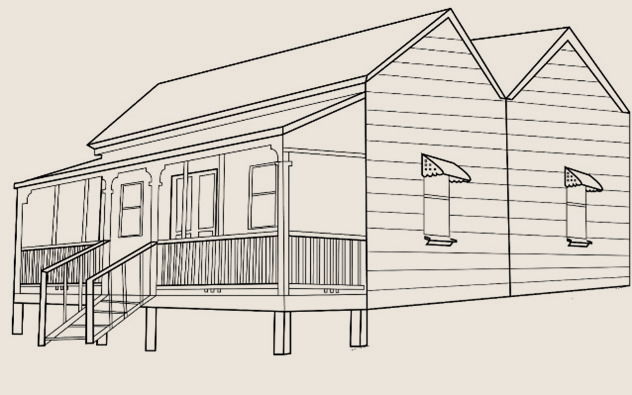
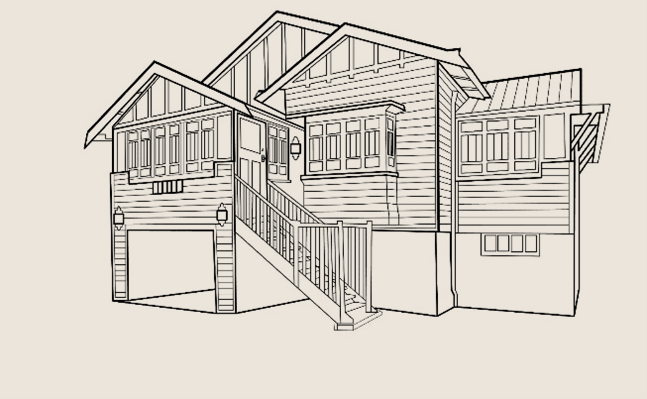
Now there are a heap of great resources you can use out there to help narrow down the period. Our top 3 include:
- The book that the industry calls “the yellow bible”. Aka the book by Judy Gale Rechner titled “Brisbane house styles 1880 to 1940 – A guide to the affordable house”. Unfortunately, it is hard to get a copy these days, but the BCC library has a copy if you get stuck.
- The House Detectives YouTube channel. Marianne has a heap of great resources (including videos) that talk through the styles.
- If you visit our bio on our Instagram page, you will find a link which takes you to a fact sheet that illustrates the typical pre-1911 house styles.
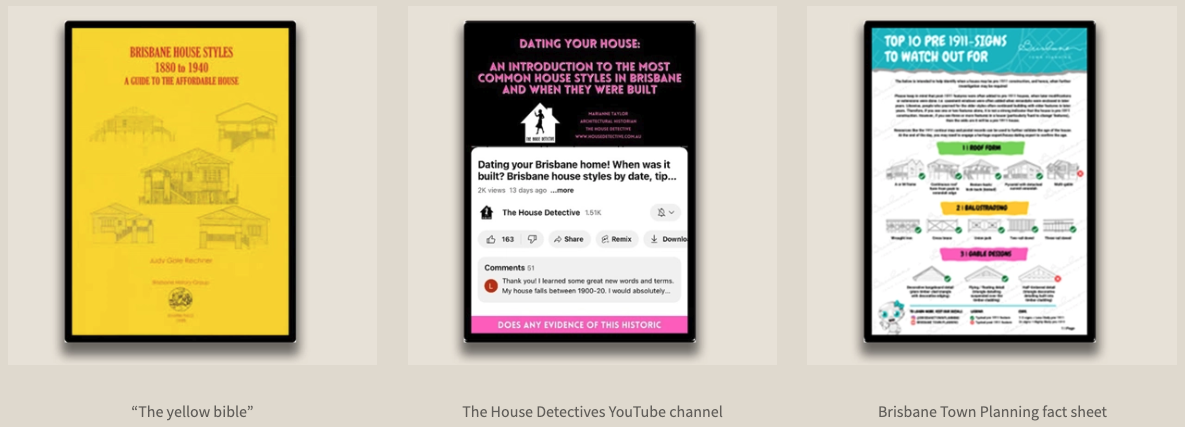
Just a word of warning here …
- It is common (particularly in the post-WW2 period) for people to repurpose materials. I.e. to take more modern casement windows, and to use them to enclose a verandah on a pre-1911 house. So, make sure you focus your efforts on reviewing the features on the original portions of the house … and/or focus on features that are “hard to change”. Keeping in mind that doors can easily be swapped out as fashions change. However, the main roof forms aren’t going to be changed on such a whim.
- Also, like today, some people like to hold onto the nostalgia of the past. Which means they like to incorporate historic features into a new build. So, someone may have opted to use a pre-1911 sash window in their 1920s build, as they liked the older style.
Step 3 – Checking for key curveballs
There are three big curveballs that can totally throw you off the scent in your detective mission.
Firstly, the good old relocator curveball
The resources we use don’t account for houses built at an earlier date, that were then moved to the site in question post-1946. These houses hold the same level of protection as those built on the site originally, and it was surprisingly common for houses to be moved around “back in the day”.
So, it is always a good idea to look at the BCC 1946 aerial photo, as a “sanity check”, before you go too far. You don’t want to waste time going down the path of looking at resources to suit a pre-1911 construction date, only to find it was moved to the site post-46. As you will waste a lot of time and come up empty-handed.
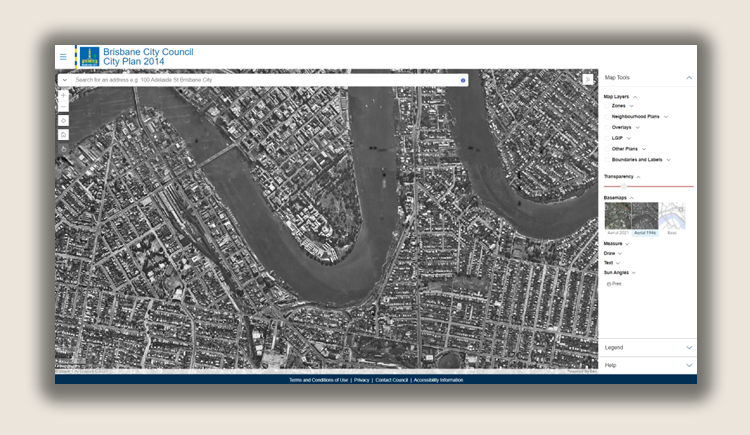
Secondly, we have the replica curveball.
Especially in the 90s, Brisbane went through a nostalgic phase of building replica Queenslanders. People weren’t just replicating individual doors or windows like we mentioned in the previous step, they were trying to replicate entire houses from earlier periods.
Once you have spent enough time in this space, you will start to pick up on the differences between a true pre-1947 house and a replica (the proportions of windows etc. are usually just “slightly off” on a replica etc.). However, for those new to this space, it can easily catch you out. So, like with relocators, it is a good idea to look at the 1946 aerial upfront as a sanity check.
Thirdly, there is always the looming threat of a human error curveball.
Keep in mind that the resources we have access to were not created with the intent of being used to date houses in 100-plus years. As such, the accuracy can be questionable at times.
Again, we will start to sound like a broken record, but this is a good reminder to treat every piece of evidence as a puzzle piece in a game. A game where the end result is a balance of probabilities date range.
Step 4 – Tackling the puzzle game
Now the real fun begins … this is the part where you dive down the rabbit hole and see where the journey takes you.
Generally speaking, there are 7 categories of resources that you can “chase”. They include:
- Lot creation resources,
- Lot occupation resources,
- Sewerage planning resources,
- Building approval records,
- Aerials,
- Historic photos, and
- What call “luck dip resources”. Aka the random stuff you stumble onto,
At the time of writing, we have a toolkit of 32 resources that fall into each one of those categories above, which we dive into when we are trying to date a house. There are no doubt a heap more out there that we are yet to come across or uncover.
If you want to know more about what they are, check out our “House Dating 101” playlist on our Brisbane Town Planning YouTube channel. As we share the most common ones there.

Summary
This is a constantly evolving space. Every now and then a new resource comes online (aka is discovered), and the more time you invest in the process, the more skills you pick up. Both being factors that increase your chances of being able to date a house.
Good luck on your house-dating journey!
Peta Charles - Brisbane Town Planning
Peta Charles is the Principal Town Planner at Brisbane Town Planning. She graduated with honours during her studies at the University of Queensland. Peta gained invaluable career experience whilst working for Brisbane City Council which has given her useful insight and exposure which adds considerable value to any project. Brisbane Town Council has proudly been on the go for over 10 years.
Brisbane Town Planning can be reached via the following details:
Email | mail@brisbanetp.com.au
Phone | (07) 3113 3261
Want to know more about Brisbane Town Planning? Feel free to check out their website or follow them via their social media links:





